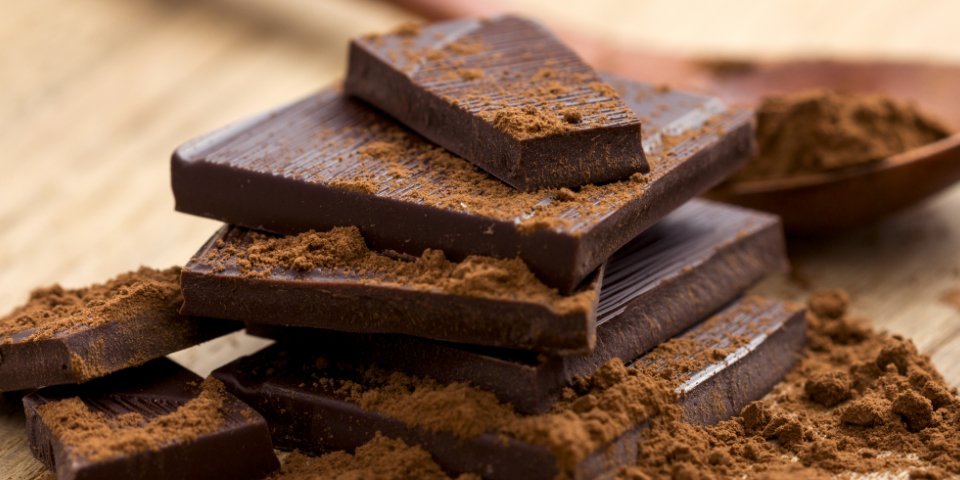Luscious and decadent, chocolate is a guilty pleasure that children and adults alike enjoy for it embodies pleasure, warmth and joy. Dark or white, powder or rectangles in neat rows of four – chocolate is much like wine. Everyone has their favourite type, individual taste and brand preferences, and ones they really dislike. But did you know that the earliest documented use of cacao dates back to the ancient Mayan civilization? It was consumed for nutritional and therapeutic purposes and it’s no wonder it was referred to as “Food of the Gods” by the Mayans.
Chocolate has a stimulating effect on the central nervous system mainly attributed to the compound theobromine and to a lesser extent, its chemical cousin, caffeine. Theobromine possesses bronchodilatory (ability to relax respiratory muscles to increase airflow to lungs) and vasodilatory properties (ability to widen the diameter of blood vessels). Take heed asthmatics and hypertensives! It’s also the substance that gives dark chocolate its typical bitter taste.
Polyphenols are organic molecules, ubiquitous in the plant kingdom which play a vital role in plants. They are products of plant secondary metabolism and participate in the defensive mechanisms of the latter. These are the compounds that confer therapeutic properties to plants. The main classes of polyphenols present in cacao are flavonoids, catechins, anthocyanins, among others.
Like theobromine, the polyphenols present in cacao, especially flavonoids, exert cardioprotective effects. They enhance the production of nitric oxide, a potent vasodilator which, as its name suggests, helps to dilate blood vessels thereby lowering blood pressure and improving blood circulation. Moreover, the polyphenols found in cacao are antioxidant and anti-inflammatory, i.e., they help fight against oxidative stress, which is the root cause of most chronic diseases such as cancer, type 2 diabetes, etc.
Indeed, the long-term consumption of polyphenol-rich cacao has been associated with a reduction in insulin resistance in many clinical studies. More surprisingly, INSERM researcher Astrid Nehlig claims that these polyphenols have the potential to improve cognitive functions (such as memory and speed of treatment) and delay the onset of neurodegenerative diseases such as Alzheimer’s disease. According to Magrone et al. (2017), they can also reduce intestinal inflammation and modulate gut microflora composition, including Bifidobacteria and Lactobacilli, which help to maintain gut ecosystem stable through their immunomodulatory properties.
Last but not least, cacao is an excellent source of magnesium, a trace element essential for the proper functioning of the body. Magnesium is referred to as an anti-stress mineral as it promotes relaxation (including muscle), facilitates the transmission of nerve impulses and reduces fatigue. Half a cup of cacao powder provides about 214 mg of magnesium, which is more than half of our daily requirement for magnesium (about 300 mg for women and 400 mg for men).
Choosing the right chocolate…
The numerous virtues cited above are attributed to unprocessed raw cacao powder. However, most of us consume chocolate which is a mixture of cocoa powder, cocoa butter (to give it a silky texture) and sugar (to reduce bitterness). Not to mention that fermentation and roasting, two processes necessary for the development of flavors, reduce the percentage of cacao polyphenols. Yet chocolate can actually be good for you, if properly chosen and moderately eaten (as even dark chocolates with high cocoa content can be caloric!). The higher the cocoa content, the better! Eating chocolate imparts pleasure, but as with all good things, it’s best in moderation! For maximum health benefits, choose dark chocolate made with at least 70% of cocoa.
Discover our 3 scrumptiously healthy vegan chocolate recipes!




